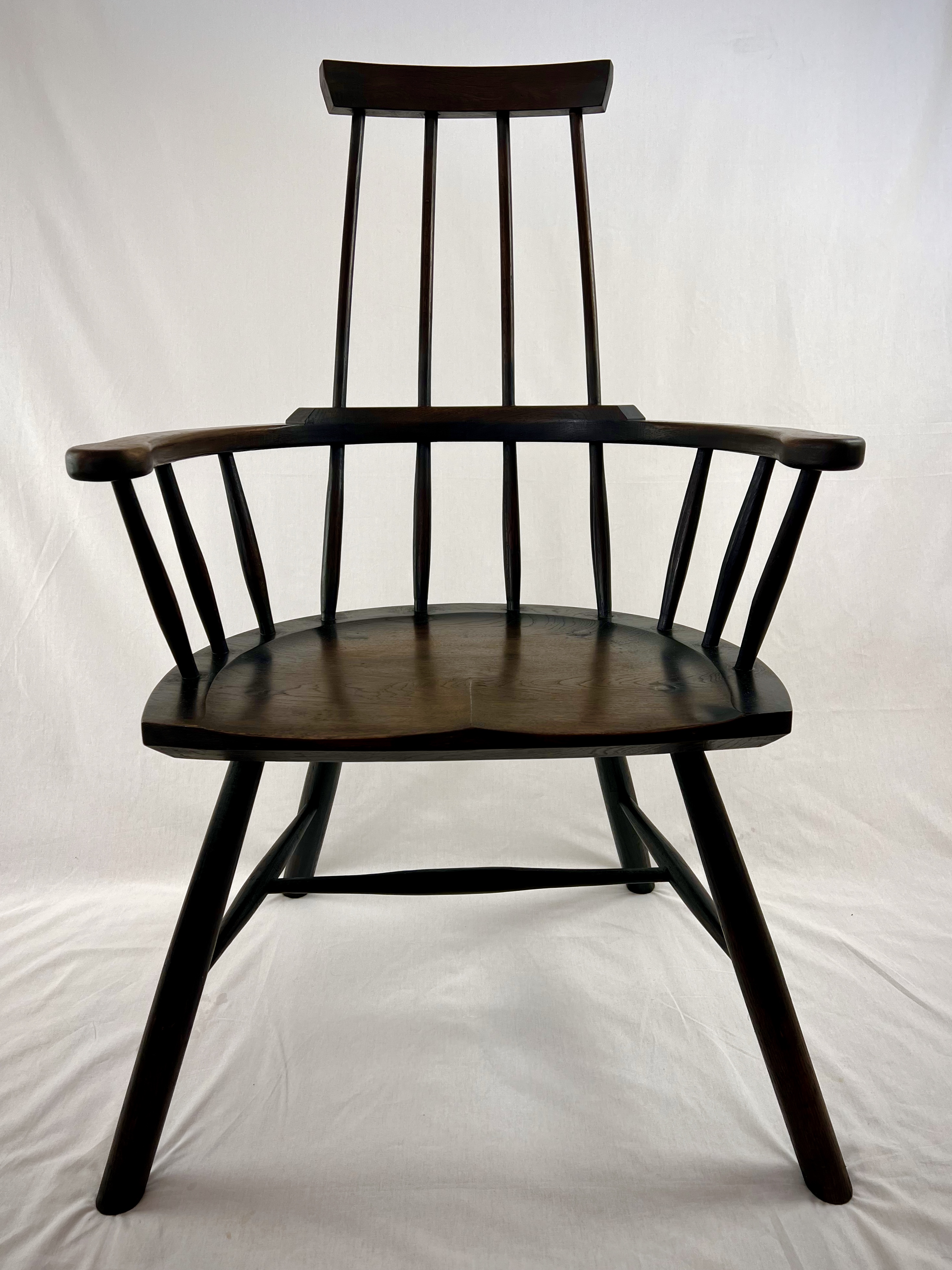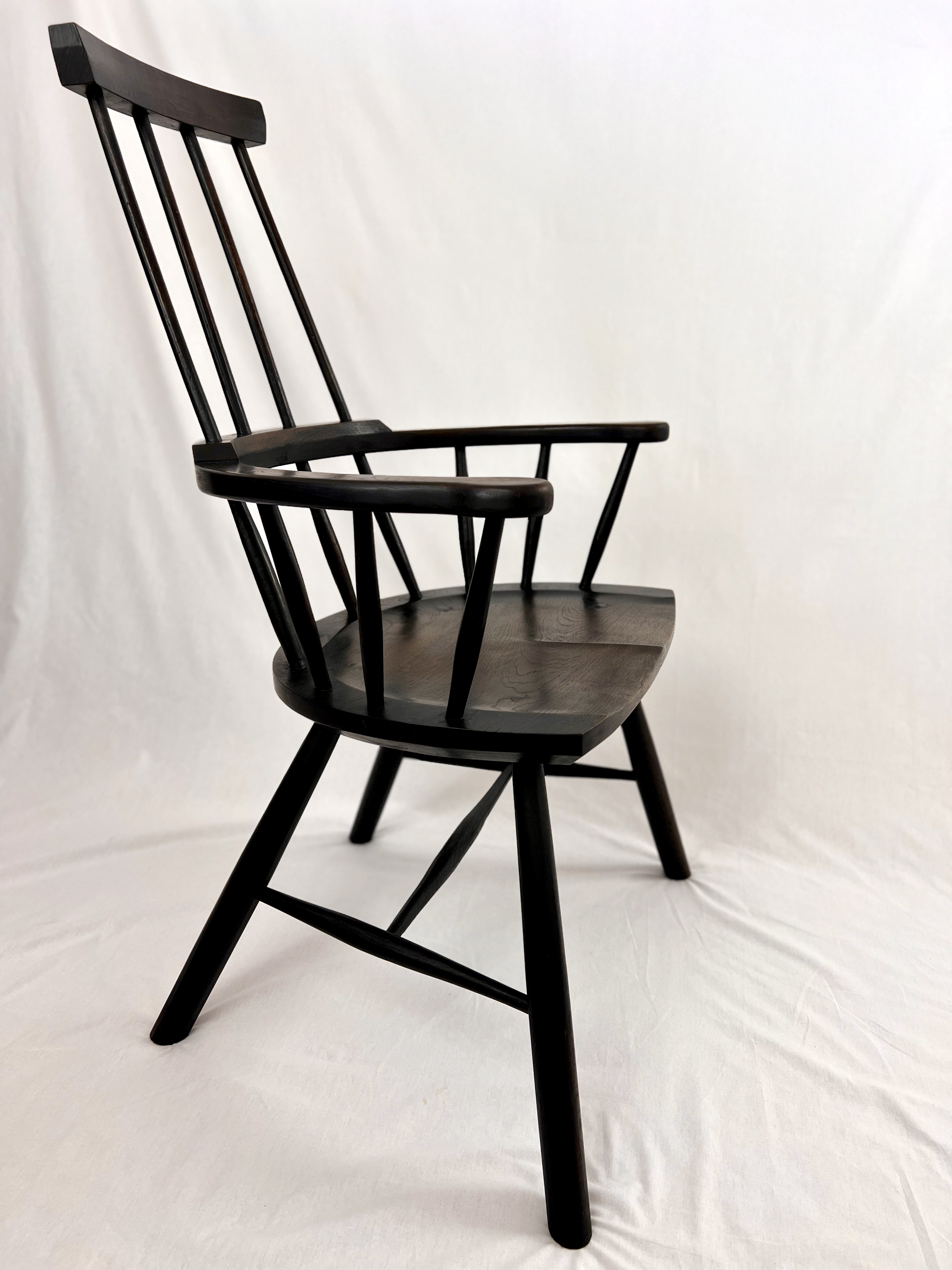Our old friend Greg (front for Haliburton’s best funk and reggae band) came out to visit this summer. Before he arrived he suggested that he would like to buy one of my chairs. I was flattered but replied that my chairs were not for sale. At least not to friends. But I’d be happy to build one for him just the same, possibly in exchange for a nice bottle of whisky. I managed to get a good start on things before he arrived, hoping to give him a sense of what I was up to. But we had paddling adventures to chase and there was no way the chair was going to be done before Greg had to head home. We’d just have to figure out shipping later.
Greg did not have any particular design preferences, and he left me free to follow my own design instincts. Earlier this year a chair by Chris Williams caught my eye. Chris Williams is the guru of welsh stick chairs. This chair had rounded legs and sticks, no facets. And the back sticks were not parallel, they pulled closer together as they approached the crest. I liked the look and thought I could work those ideas into this chair.
Unlike the Chris Williams chair which was sleek and black and beautiful. I wanted a chair that looked a bit lived-in, following John Porritt’s belligerent finishing approach. I had experimented with this in my recent sackback chair with mixed results. This chair would give me an opportunity to refine that finishing technique.
The chair was to have a conventional three-piece arm bow. I paid particular attention to shaping the arm bow and the hands so that it was comfortable and inviting. It took a while to get those shapes just right but the extra effort paid off. With all the visits and paddling and other priorities this summer, it took several months to make all the pieces and I managed to get the chair glued-up by late August.
One principle of belligerent finishing is that wood gets “aged” before any finish is applied. John Porritt often uses nitric acid to do this, but that is a terrifying prospect. Fortunately this chair was made of Garry Oak which can be aged by fuming it with ammonia. Ammonia is also a bit scary, but I’ve worked with it before and I have the right safety gear. After a day or two outside in a makeshift tent with a tray of ammonia the chair took on a darker green-brown colour, as if it had aged a couple of decades. The next step was to apply a thick coat of black milk paint, and then rub it away from the areas that would get the most wear: seat, hands, back. Finally a coat of linseed oil wax was applied.
Garry Oak (fumed), Hide glue, Black milk paint, Allback linseed oil wax


